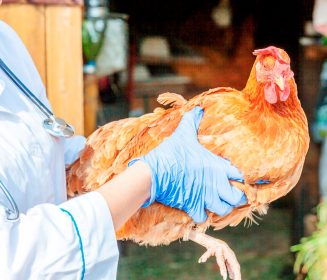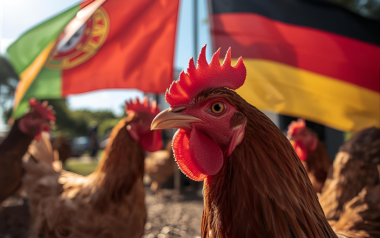Sources: Available upon request
05 Aug 2024
CDC allocates $10 million to prevent human infections of AI H5N1
The Centers for Disease Control and Prevention (CDC) recently announced a strategic initiative to combat the spread of Avian Influenza H5N1 in humans. This move comes as a response to the growing concern over potential outbreaks and the need to protect public health.
The Centers for Disease Control and Prevention (CDC) recently announced a strategic initiative to combat the spread of Avian Influenza H5N1 in humans. This move comes as a response to the growing concern over potential outbreaks and the need to protect public health.
Understanding Avian Influenza H5N1
Avian Influenza H5N1, commonly known as bird flu, primarily affects birds, especially poultry. However, there have been documented cases of transmission from birds to humans. While human-to-human transmission remains rare, the CDC recognizes the importance of proactive measures to prevent any potential outbreaks.
The $10 million allocation
The CDC has earmarked $10 million specifically for preventing human infections of Avian Influenza H5N1. This funding will be utilized to implement targeted interventions and research initiatives. The goal is to reduce the risk of transmission and enhance preparedness in case of an outbreak.
Targeted strategies
The CDC’s approach involves several key strategies:
- Surveillance and monitoring: Rigorous surveillance will help identify any potential cases early on. Monitoring bird populations, especially those in close proximity to humans, is crucial.
- Vaccination and education: The allocation will support vaccination campaigns for high-risk groups, such as poultry workers and individuals who come into contact with birds. Additionally, educational programs will raise awareness about preventive measures.
- Research and development: The CDC will invest in research to better understand the virus, its transmission dynamics, and potential mutations. This knowledge will inform effective prevention strategies.
- Enhanced biosecurity: Strengthening biosecurity measures on farms and in live poultry markets will minimize the risk of transmission from birds to humans.
Collaboration and global efforts
The fight against Avian Influenza H5N1 is not limited to the United States. The CDC will collaborate with international health organizations, sharing expertise and resources. By working together, the global community can prevent the spread of this potentially deadly virus.
Conclusion
The CDC’s commitment to allocating $10 million for Avian Influenza H5N1 prevention underscores the importance of proactive measures. By investing in surveillance, education, and research, we can safeguard public health and mitigate the risk of future outbreaks. Let us remain vigilant and united in our efforts to protect both humans and birds from this infectious threat.
Remember that Avian Influenza H5N1 remains a serious concern, and continued vigilance is essential. If you have any symptoms or suspect exposure, seek medical attention promptly. Stay informed, follow preventive guidelines, and together, we can minimize the impact of this virus on our communities.






































